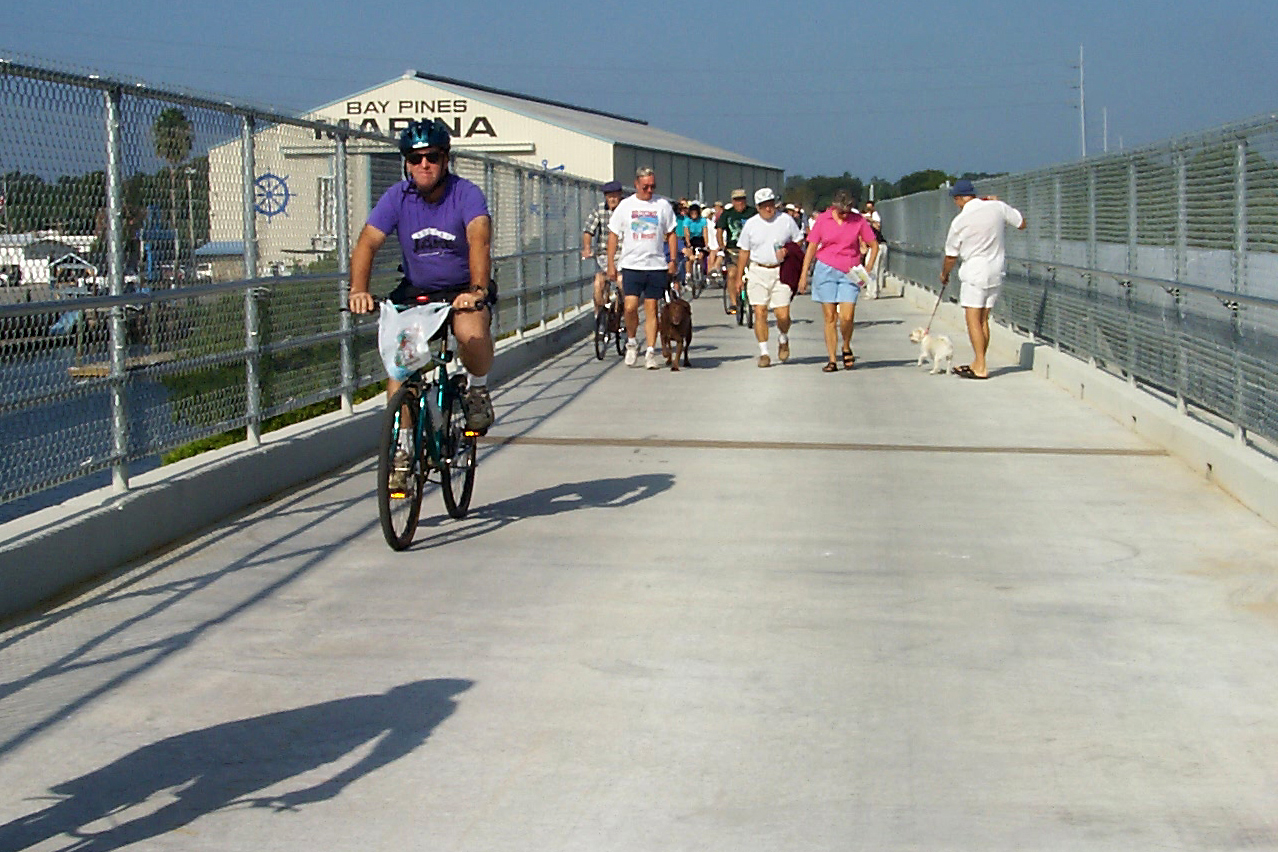The 30-year-old 69-mile Pinellas Trail draws some two million users each year to trek and bike from one end of Pinellas County to the other. With that much use, conflicts occasionally arise. After conducting a study about the problems people face while using the trail, the county addressing them with new signs to bring awareness to the need to be courteous on the trail and follow the rules.
Pinellas County recently held a work session on trail issues with Parks and Conservation Director Paul Cozzie, Public Works Director Joan Rice and Forward Pinellas Executive Director Whit Blanton. Forward Pinellas is the county’s transportation arm.

“It comes down to us wanting everyone using the trail, so you can’t walk four abreast with your friends. If you are a group of cyclists, we encourage everyone to go single file. Don’t let your dog’s leash extend eight or 10 feet across the trail,” Cozzie said. “The work session was based on concerns from folks who use the trail, basically information we picked up off social media and questions regarding the use of the trail, who’s allowed, who’s not allowed. We wanted to address three major issues, one being speeding on the trail, next, the use of e-bikes and micro mobility devices and overall trail courtesy, specifically as it addresses where walkers and cyclists and roller bladers need to be on the trail.”
Study discoveries
Here are some discovered by Forward Pinellas:
Speeding
The first issue was speeding. Forward Pinellas did a speed study where the staff set up speed detection devices and used handheld devices in some of the busier areas. The speed limit is 20 miles per hour, and the study found that most people stayed under that limit. “We found very little speeding,” Cozzie said. “In fact, most people were riding 11 to 15 miles per hour. The small percentage of speeding was found in the more open areas of the trail, particularly in the north county. “It showed that speeding isn’t a big issue on the trail,” he said.

While a pedestrian passed by someone going 12 miles per hour while they are going two to three miles per hour may feel like a bicyclist is speeding, but they actually are not, Cozzie said. “We generally did not see cause for concern.”
E-bikes
That dovetailed into the next subject – e-bikes, which are bicycles with small motors. “People have the perception of those folks on e-bikes are the people who are doing the most speeding,” Cozzie said. “Once again, based on the surveys, we find that most e-bike users generally are older and really they are out there for the ability to continue to bicycle, but may not have the strength, so an e-bike is more of an assistance device,” he said. Depending on the size of the motor, an e-bike can go up to 20 miles per hour or 28 miles. But they must stay within the 20-mile-per-hour speed limit on the trail.
Related: Adventurous play outdoors leads to stronger mental health for kids
“Of course, e-bikes are fairly expensive, but are the fastest growing group for the trail use,” Cozzie said. “We will see a lot more on the trail. Based on the research that staff did, this is a wave or trend that is coming, and we want the Pinellas Trail to be available to everyone, so we support the use of e-bikes as long as they are following the rules of the trail – no speeding, keep right except to pass and being courteous by letting people know you are behind them.”
Courtesy
That brought the county staff to the third issue, which is courtesy on the trail.
“When the trail was first developed in the early 90s it was marked, segmented,” Cozzie said. “There was a five-foot portion for pedestrians to go north and south and there was a remaining 10 feet reserved for bicycles.” Over time, the county stopped maintaining those markings because people were generally accustomed to keeping right except to pass, he said. But that courtesy has waned.
“We are going to restart our courtesy campaign, which is basically eight messages that we posted on the trail for a period of time earlier this year that talked about things like keep right, let someone know you are behind them. We’re working on a whole new signage campaign and hope to have it up by next year,” Cozzie said. “We have received some funding for that. In the meantime, we still have the old yard signs and will see about putting those out sooner.”
Pinellas County is opening a new nine mile segment this year. It’s part of its effort to create an oval loop that will allow people to walk or bike from St. Pete to Tarpon Springs along the western side of the county, then come back to St. Pete on the eastern side. “We call it the north loop section,” Cozzie said. One more seven-mile segment will complete the Pinellas Trail oval.
The area in and around Dunedin is the most heavily used of the trail, based on counts. Dunedin has really embraced the trail as part of its downtown experience. Therefor cyclists and walkers use it heavily, Cozzie said. “There are a lot of restaurants and breweries in that area.”




























